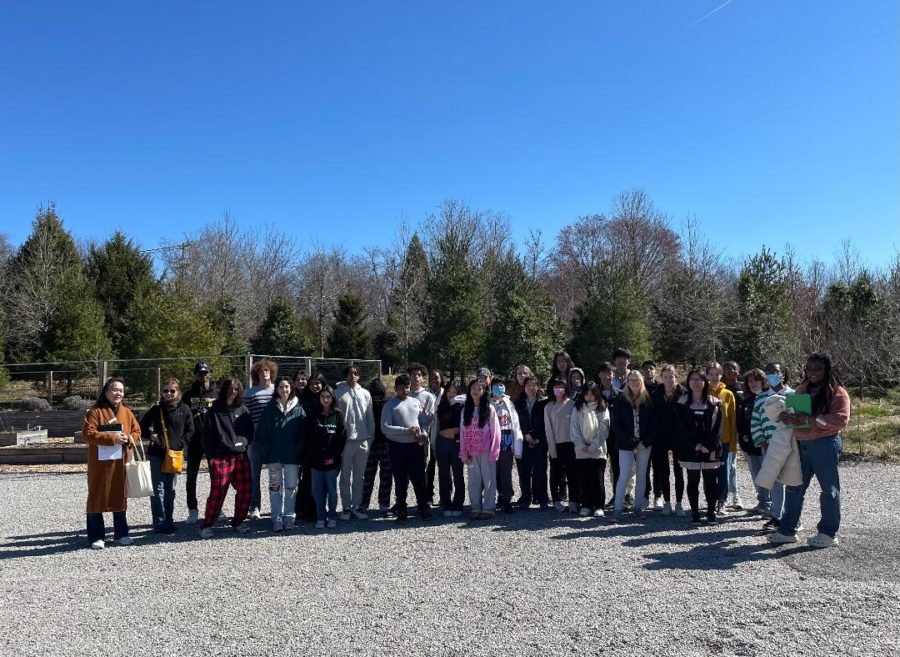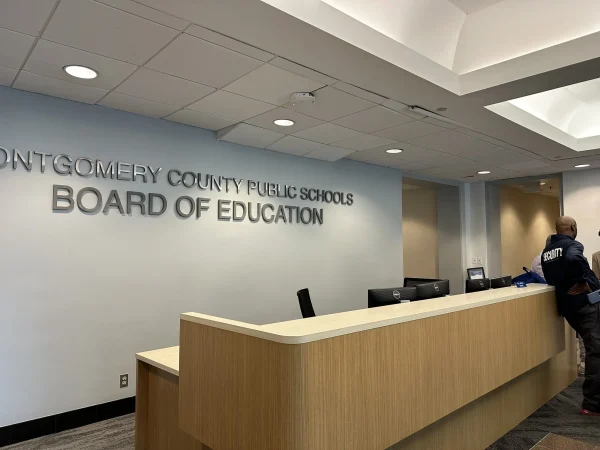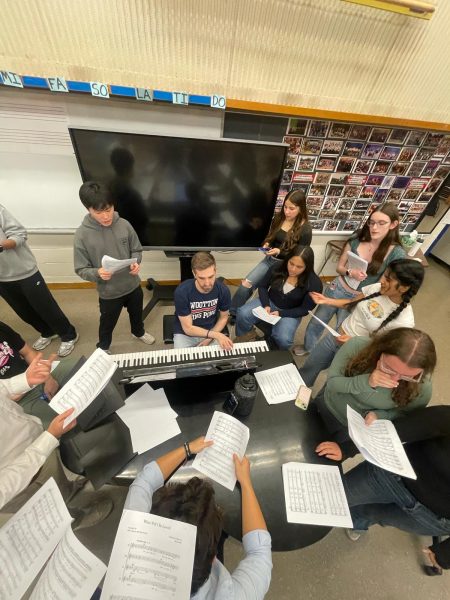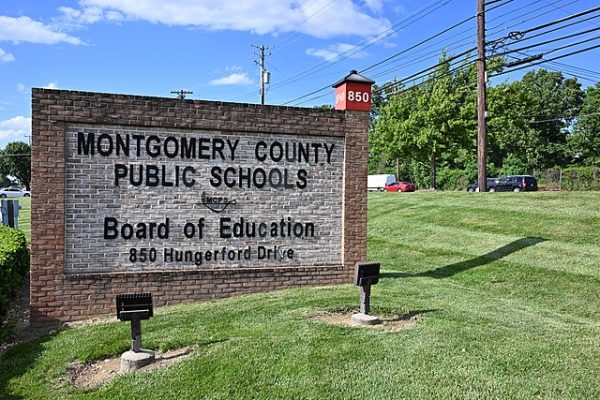Caged in: How jumping through hoops causes lack of field trips at school
On Mar. 9, the art classes went on a field trip to the Glenstone museum.
Early morning math. 11:00 a.m. science. Afternoon history. End of day English. Repeat. Students’ routines have become so uniform that they see the same classmates every transition period, sit in the same seat day after day and attend class at the same time every day for their entire high school career. Ask any student, “what happened in school last Thursday?” and they won’t be able to recall a thing. This rigid structuring inhibits creativity and makes school days repetitive and forgettable. Fortunately for students, there is a clear answer to this problem: field trips.
This year there have been a total of 54 school field trips where students have gone off campus for either a core class or elective class adventure. From face value, it looks like lots of opportunities for students to enjoy these experiences but once you dig a little deeper an interesting trend emerges. Out of the 54 field trips, a whopping 48% or 26 of the 54 consistented of music related classes (a cappella and band) according to school administration. For the musicians these are extremely valuable and provide a great way for them to express themselves outside of the classroom. “We went to Edison High School for an adjudication [an event where musicians get critiqued by judges] and it was extremely fun. The closest thing I can compare it to would be like a big game that your team has been preparing for and it made all the days practicing at school worth it,” sophomore Matthew DeLeon said.
For the students interested in music these vast opportunities are great ways to showcase their talents and switch up ordinary days in the music room. On the other hand, for non-musicians the chance to go on a field trip is limited. While music trips are often free for students and are hosted by local schools, the combination of complex paperwork and logistics mixed with high costs and limited spots on buses discourages teachers from incorporating field trips into their curriculum according to nutrition teacher Kristen Daugherity.
On Apr. 17, the AP Human geography, Honors Nutrition and AP Environmental Science classes will team up for a mega field trip at Spring Pastures farm in Middletown, MD. This idea caught fast traction and the 50-person trip had all the permission slips completed in less than a week. Although the field trip looks like an easy way for students to learn interactively, it took an extremely long road to get there.
The teachers need to go through multiple levels of paperwork that can take months and many tries to complete. It took the Spring Pastures trip four different times to approve the trip as they had to fill out information regarding the buses, substitutes to cover classes, an agenda at the farm and take classes on how to deal with any health and safety emergencies that occur.
Lastly, determining cost for a field trip can be extremely challenging for school groups. The Spring Pastures trip costs $30.75 for students to cover buses and miscellaneous costs. Luckily when the art students were able to go to the Glenstone Museum, they were given a small group tour of the facility and road coach buses all for free. “I think field trips are extremely important for students because it’s good for them to see the contemporary arts because we’re always used to learning about the old masterpieces,” art teacher Unsil Kim said.
The simple solution to this problem is making the field trip planning process easier. By cutting the red tape and reducing the paperwork for trips, teachers will be more inclined to plan field trips in the future. Financially, organizing parent carpool signups or letting students drive themselves will cut down on bus costs and decrease the price of the trips.
Your donation will support the student journalists of Thomas S. Wootton High School. Your contribution will allow us to purchase equipment and cover our annual website hosting costs.
Mason is a 2023 graduate.






![The 2025-2026 Editorial Board Alex Grainger, Cameron Cowen, Helen Manolis, Emory Scofield, Ahmed Ibrahim, Rebekah Buchman, Marley Hoffman, Hayley Gottesman, Pragna Pothakamuri and Natalie Pak (Chase Dolan not pictured) respond to the new MCPS grading policy. “When something that used to be easy suddenly becomes harder, it can turn [students’] mindset negative, whereas making something easier usually has a better impact. I think that’s where a lot of the pushback comes from. But if you put emotions aside, I do think this change could help build stronger work ethic,” Ibrahim said.](https://woottoncommonsense.com/wp-content/uploads/2025/09/fqr5bskTXpn0LRQMmKErLuNKdQYBlL726cFXBaWF-600x450.jpg)
